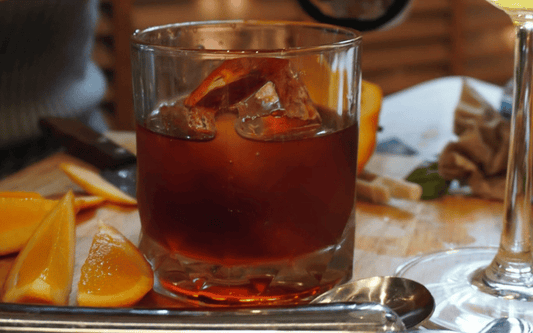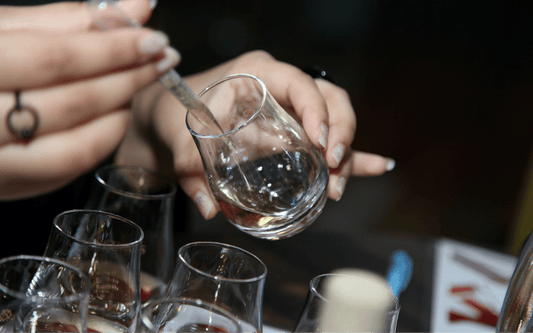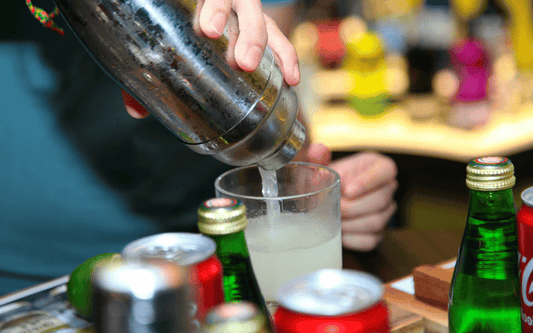MEZCAL

Mezcal, a traditional Mexican spirit, is deeply rooted in the country's history and culture. Its origins trace back to pre-Hispanic times, when indigenous peoples of Mexico would ferment and distill agave plants to create a potent and flavorful drink. The word "mezcal" is derived from the Nahuatl word "mexcalli," which means "oven-cooked agave." Unlike tequila, which is a type of mezcal made specifically from blue agave in designated regions, mezcal can be produced from a variety of agave species, giving it a unique and diverse flavor profile.
The Process of Making Mezcal
The production of mezcal is a meticulous process that involves several key steps:
-
Harvesting: The journey begins with the harvesting of agave plants, which can take anywhere from 7 to 25 years to mature. The heart of the agave, known as the "piña," is extracted and used in the production process.
-
Roasting: The piñas are roasted in large, earthen pits lined with hot stones, which imparts a distinctive smoky flavor to the mezcal. This roasting process can take several days and is a defining characteristic of traditional mezcal production.
-
Crushing: After roasting, the piñas are crushed to extract the juice. Traditionally, this is done using a "tahona," a large stone wheel pulled by a mule or ox, although modern methods may use mechanical crushers.
-
Fermentation: The crushed agave is then placed in fermentation tanks, where it is left to ferment naturally with the help of wild yeast. This process can take anywhere from a few days to several weeks, depending on the ambient temperature and the specific techniques used by the mezcalero (mezcal maker).
-
Distillation: The fermented liquid, known as "mosto," is distilled in copper or clay stills. Mezcal is typically distilled twice to achieve the desired purity and alcohol content. The second distillation is often done slowly to allow the mezcalero to carefully select the "heart" of the distillation, which contains the best flavors.
-
Aging: Mezcal can be consumed immediately after distillation, known as "joven" (young) mezcal, or it can be aged in barrels to develop more complex flavors. Aging periods vary, with "reposado" (rested) mezcal aged for 2 to 12 months and "añejo" (aged) mezcal aged for at least one year.
Categories of Mezcal and How They Are Produced
Mezcal is categorized based on its aging process, the type of agave used, and the production methods:
-
Joven (Young): This unaged mezcal is clear and typically has a bold, smoky flavor. It is bottled shortly after distillation, preserving the pure essence of the agave.
-
Reposado (Rested): Aged for 2 to 12 months in oak barrels, reposado mezcal has a golden hue and a more mellow, rounded flavor with hints of wood and spice.
-
Añejo (Aged): Aged for at least one year, usually in smaller barrels, añejo mezcal is darker and more complex, with rich, deep flavors that develop over time.
-
Espadin: The most common type of mezcal, made from Espadin agave. It is versatile and often used as the base for many mezcal varieties.
-
Tobalá, Tepeztate, and Other Wild Agaves: These mezcals are made from wild agave species, often harvested from remote areas. They are usually more expensive and offer unique, complex flavors not found in Espadin mezcal.
How to Choose Mezcal
When selecting mezcal, consider the following factors:
-
Type of Agave: Different agave species produce distinct flavors. Espadin is common and versatile, while wild agaves like Tobalá and Tepeztate offer more unique and complex profiles.
-
Production Methods: Traditional production methods, including roasting in earthen pits and distillation in clay stills, can significantly influence the flavor. Look for artisanal or ancestral mezcals for a more authentic experience.
-
Aging: Decide whether you prefer the bold, smoky flavors of a joven mezcal or the more nuanced, aged profiles of reposado or añejo mezcals.
-
Region: Mezcal can be produced in several Mexican states, each with its own terroir and production traditions. Oaxaca is the most well-known, but mezcals from other regions like Durango and Guerrero can offer interesting variations.
Popular Mezcal Cocktails
Mezcal's unique smoky flavor makes it a versatile ingredient in a variety of cocktails, from classic to contemporary:
-
Mezcal Margarita: A smoky twist on the classic margarita, made with mezcal, lime juice, and orange liqueur, served on the rocks with a salted rim.
-
Oaxaca Old Fashioned: A sophisticated cocktail featuring mezcal, tequila, agave syrup, and bitters, garnished with an orange twist.
-
Mezcal Paloma: A refreshing drink combining mezcal, grapefruit soda, and lime juice, served over ice with a salted rim.
-
Mezcal Negroni: A smoky version of the traditional Negroni, made with mezcal, sweet vermouth, and Campari, garnished with an orange peel.
-
Smoky Mule: A mezcal-based twist on the Moscow Mule, featuring mezcal, ginger beer, and lime juice, served in a copper mug.
-
Mezcal Sour: A smooth and frothy cocktail made with mezcal, lemon juice, simple syrup, and egg white, garnished with a dash of bitters.
Mezcal is a fascinating and diverse spirit with a rich history and unique production methods. Whether you prefer it neat, sipped slowly to savor its complex flavors, or mixed into a creative cocktail, mezcal offers something for every palate. Its versatility and deep cultural roots make it a truly special addition to any spirits collection. Enjoy exploring the world of mezcal and discovering its many nuances and delights. ¡Salud!




